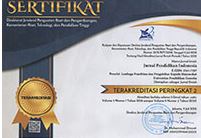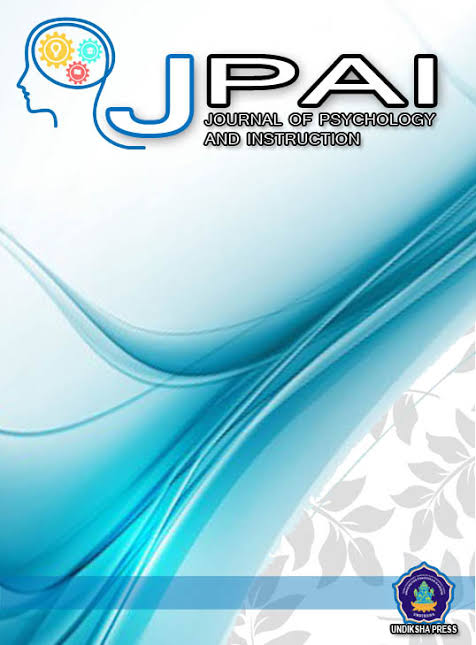The millennials: Adversity intelligence and work engagement
DOI:
https://doi.org/10.23887/jpai.v4i3.33707Keywords:
adversity intelligence, work engagement, employees, millennial generationAbstract
The industrial world is transforming towards the era of revolution 4.0 and society 5.0. In this era, digital technology is applied and becomes the center of human life. Demand that the millennial generation who currently dominates the job market in Indonesia have adversity intelligence so that they can be more engaged in their work and have a positive impact on company performance and development. This study aims to determine the relationship between adversity intelligence and work engagement in the millennial generation. Subjects in this study were 214 employees, aged 20-39 years who live in Yogyakarta and have worked at least one year. The data collection method in this study uses a Likert scale model. Data were collected using the Work Engagement Scale and the Adversity Intelligence Scale, by sending the scale via Google Form to respondents. The data analysis technique used is the product-moment correlation from Karl Pearson. Based on the data analysis, the correlation coefficient (R) was obtained for 0.820 (p <0.01). These results indicate that there is a very significant positive relationship between adversity intelligence and work engagement among millennial employees living in Yogyakarta. This study provides an overview of the level of work engagement and adversity intelligence for millennial generation employees, so as to increase the work engagement of millennial generation employees by increasing their adversity intelligence.
References
Albrecht, S. L. (2010). Handbook of employee engagement: Perspectives, issues research and practice. Edward Elgar Publishing Ltd. DOI: https://doi.org/10.4337/9781849806374
Bakker, A. B. (2011). An evidence-based model of work engagement. Current Directions in Psychological Science, 20(4), 265–269. https://doi.org/https://doi.org/10.1177/0963721411414534. DOI: https://doi.org/10.1177/0963721411414534
Bakker, A. B., & Leiter, M. P. (2010). Work engagement: A handbook of essensial theory and research. Psychology Press. DOI: https://doi.org/10.4324/9780203853047
Cahyana, K., & Prahara, S. (2020). Work engagement dengan intensi turnover pada karryawan. Intuisi: Jurnal Psikologi Ilmiah, 12(3). DOI: https://doi.org/10.15294/intuisi.v12i3.24073
Dewi, N. K., & Sawitri, D. R. (2015). Hubungan adversitas dan keterlibatan kerja pada Karyawan PT. Gandum Mas Kencana Kota Tangerang. Jurnal Empati, 4(1), 123–129.
DIP. (2019). Generasi Millenial dalam industri 4.0: Berkah bagi sumberdaya manusia Indonesia atau ancaman? Edisi pertama.
Ekasaputri, F. A. (2016). Adversity quotient dan psychological capital dalam menentukan keterikatan kerja pada karyawan. SENASPRO.
Frederman, B. (2009). Employee engagement : A roadmap for creating profits, optimizing performance, and increasing loyality. Jossey-Bass A Wiley Imprint.
Gallup. (2016). How millennials want to work and live. Gallup Inc.
Gibbons, J. (2006). Employee engagement: A review of current research and its implications. The Conference
Board.
Gorgievski, M. J., & Bakker, A. B. (2010). Passion for work: Work engagement versus workaholism. In S. L. Albrecht (Ed.), New horizons in management. Handbook of employee engagement: Perspectives, issues, research and practice (pp. 264–271). Edward Elgar Publishing. DOI: https://doi.org/10.4337/9781849806374.00030
Hackman, J. R., & Oldham, G. R. (2005). Work redesign. Addison-Wesley.
Hadi, S. (2013). Metodologi research, jilid 3. Andi Offset.
Harter, J. K., Schmidt, F. L., & Hayes, T. L. (2002). Business-unit level relationship between employee satisfaction, employee engagement, and business outcomes: a meta-analysis. Journal of Applied Psychology, 87, 268–279. DOI: https://doi.org/10.1037/0021-9010.87.2.268
Hauw, S., & Vos, A. (2010). Millennials’ career perspective and psychological contract expectations: Does
the recession lead to lowered expectations? Journal of Business and Psychology, 25(2), 293–302.
HR Portal. (2016). Gawat! Pekerja di Indonesia 80% not engaged, lantas apa solusinya?
Kaswan. (2017). Psikologi industri dan organisasi. Alfabeta.
KPPPA, & BPS. (2018). Statistik gender temtaik: Profil generasi milenial Indonesia. Kementerian Pemberdayaan Perempuan dan Perlindungan Anak.
Lyons, S. (2004). An exploration of generational values in life and at work. Carleton University.
Meier, J., Austin, S. F., & Crocker, M. (2010). Generation y in the workforce: Managerial challenges. Journal
of Human Resource and Adult Learning, 6(1).
Mujiasih, E. (2015). Hubungan antara persepsi dukungan organisasi (perceived organizational support) DOI: https://doi.org/10.14710/jpu.14.1.40-51
dengan keterikatan karyawan (employee engagement). Jurnal Psikologi Undip, 14(1), 40–51.
Park, J., & Gursoy, D. (2012). Generation effects on work engagement among U.S. hotel employees. DOI: https://doi.org/10.1016/j.ijhm.2012.02.007
International Journal of Hospitality Management, 31, 1195–1202.
Prahara, S., & Hidayat, S. (2019). Budaya organisasi dengan work engagement pada karyawan. Jurnal RAP DOI: https://doi.org/10.24036/rapun.v10i2.106977
(Riset Aktual Psikologi), 10(2), 232–244.
Robinson, D., Perryman, S., & Hayday, S. (2004). The drivers of employee engagement report 408. Institude
for Employement Studies.
Saragih, S., & Margaretha, M. (2013). Anteseden dan konsekuensi employee engagement: Studi pada industri
perbankan. UKM.
Schaufeli, W. B., & Bakker, A. B. (2004). Job demands, job resources, and their relationship with burnout DOI: https://doi.org/10.1002/job.248
and engagement: A multi-sample studi. Journal of Organizational Behavior, 25, 293–315.
Schaufeli, W. B., & Bakker, A. B. (2010). Defining and measuring work engagement: Bringing clarity to the concept.
In In A. B. Bakker (Ed.) & M. P. Leiter, Work engagement: A handbook of essential theory and research (pp. 10–24). Psychology Press.
Sedarmayanti. (2017). Perencanaan & pengembangan sumber daya manusia. Refika Aditama.
Stoltz, P. G. (2007). Faktor paling penting dalam meraih sukses adversity quotient. PT Gramedia
Widiasarana.
Tigchelaar, L., & Bekhet, K. (2015). The relationship of adversity quotient and leadership styles of private business leaders in Egypt. International Journal of Sciences: Basic and Applied Research (IJSBAR), 20(2), 20–48.
Wolor, C., Pratama, A., Aditya, S., & Purwana, D. (2020). Adversity quotient improving millenial generation salespeople’s performance in the industrial revolution. Humanities & Social Science Reviews, 8(1), 220–226. DOI: https://doi.org/10.18510/hssr.2020.8131
Xanthopoulou, D., Bakker, A. B., Demerouti, E., & Schaufeli, W. B. (2009). Work engagement and financial returns: A diary study on the role of job and personal resources. Journal of Occupational and Organizational Psychology, 82(1), 183–200. DOI: https://doi.org/10.1348/096317908X285633
Zemke, R., Raines, C. ., & Filipczak, B. (2013). Generation at work: Managing the clash of veterans, boomers, xers and nexters in your workplace. Ed ke2. Amacom.










